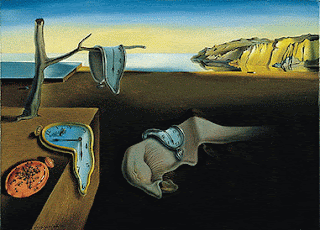Artists love to use their imaginations and in a certain
sense, space requires imagination, which is why art and space go together so
well. Space is so vast that it
leaves us with endless room to use our imagination. The idea of space and of the unknown possibilities of space
intrigue artists today to create works of art that encompass those ideas.
Xu Zhen is an artist who created a project called In Just a Blink of an Eye. In this project, performers are
harnessed in and set in positions that are normally only seen for a fraction of
a second when someone is mid way through falling to the ground. However, the performers are stuck in
these positions, illustrating what it is like to defy both gravity and time. This illusion is captivating because it
is as if the performer is frozen in a moment in time that is normally
impossible to be frozen in. The
fact that the performer defies gravity in this project is an incredible site to
see for the viewer and it illustrates the possibilities that space has to offer.
Another compelling art project done by Richard Garriott
actually created art in space. He
went into space and created a box where inside of it he taped pieces of paper
on each of the sides. From there,
he took paint and let the droplets float around inside of the box until they
hit a piece of paper. His goal was
to compare this project to that of Jackson Pollock’s work where he splattered
paint onto a canvas. Richard
Garriott discovered that when he “splattered” the paint in space, the droplets
actually stuck to the paper and dried forming spheres rather than drying flat
onto the paper like they did on earth (Art in Space)
His project allows us to see a physical change and direct effect of
space on art.
.The limitlessness of space creates limitless possibilities for artists and their imaginations’.
"Art in Space." Art in Space — OurSpace. N.p., n.d. Web. 30 May 2015. <http://www.our-space.org/materials/states-of-matter/art-in-space>.
Delgado, Kasia. "The List: Art in Space." Financial Times. The Financial Times Limited, 2015. Web. 30 May 2015. <http://www.ft.com/cms/s/2/0a8d608a-222a-11e4-9d4a-00144feabdc0.html#slide0>.
Forde, Kathleen. "Dancing on the Ceiling: Art & Zero Gravity." Dancing on the Ceiling: Art & Zero Gravity Curated by Kathleen Forde : EMPAC Curtis R. Priem Experimental Media and Performing Arts Center : Troy, NY USA. Curtis R. Priem Experimental Media and Performing Arts Center – Rensselaer Polytechnic Institute, 2010. Web. 30 May 2015. <http://zerogravity.empac.rpi.edu/>.
"PERFORMA07." PERFORMA07. N.p., n.d. Web. 30 May 2015. <http://07.performa-arts.org/artists.php?id=22&detail=true>.
"Zu Xhen : In Just a Blink of the Eye." Dancing on the Ceiling. Curtis R. Priem Experimental Media and Performing Arts Center – Rensselaer Polytechnic Institute, 2010. Web. 30 May 2015. <http://zerogravity.empac.rpi.edu/zhen/>.











